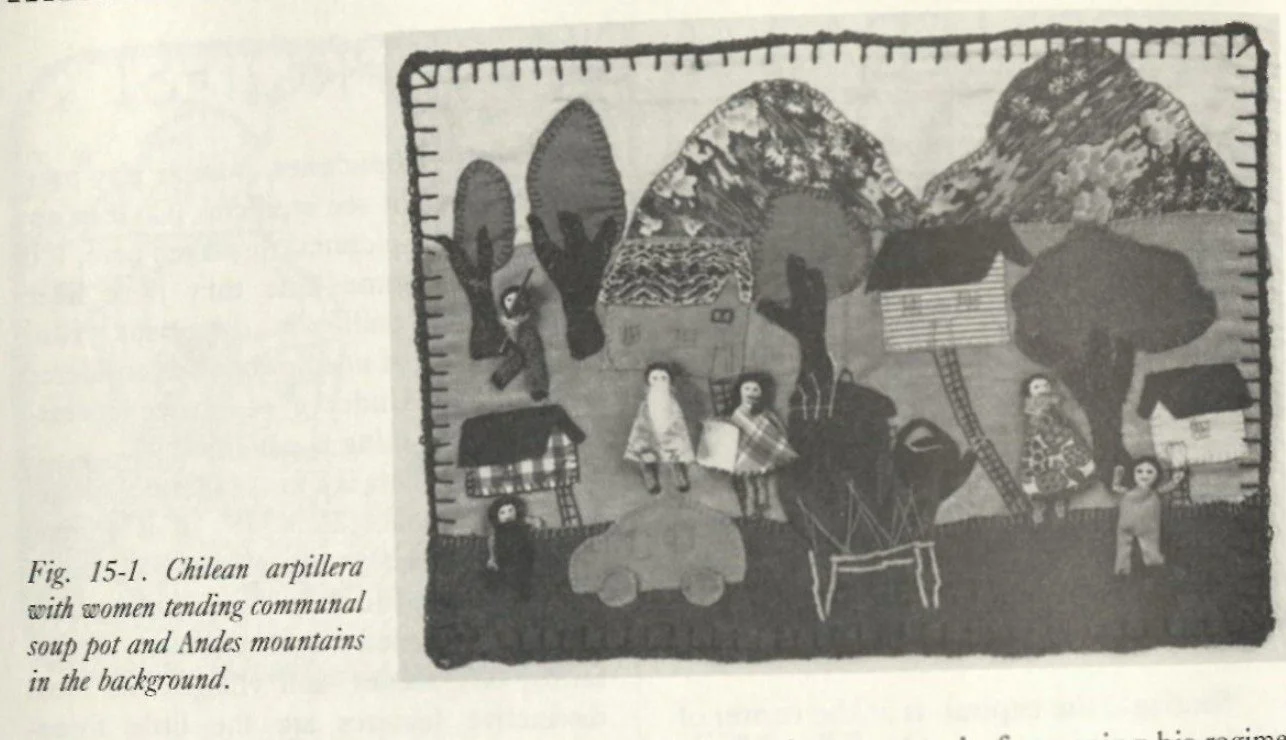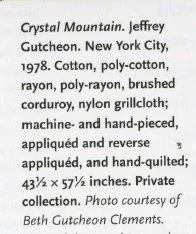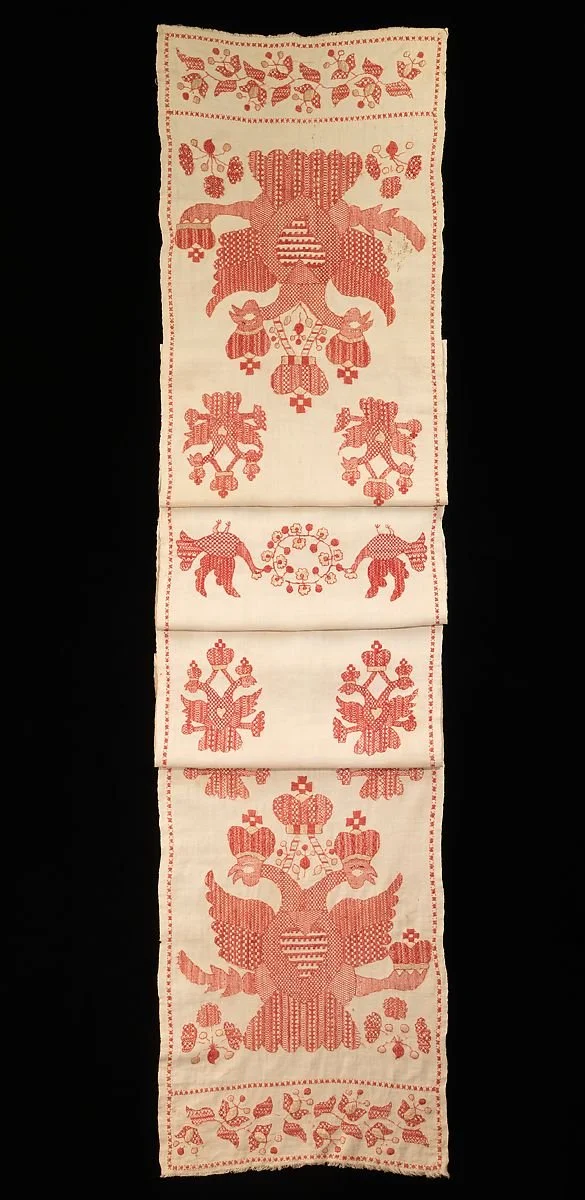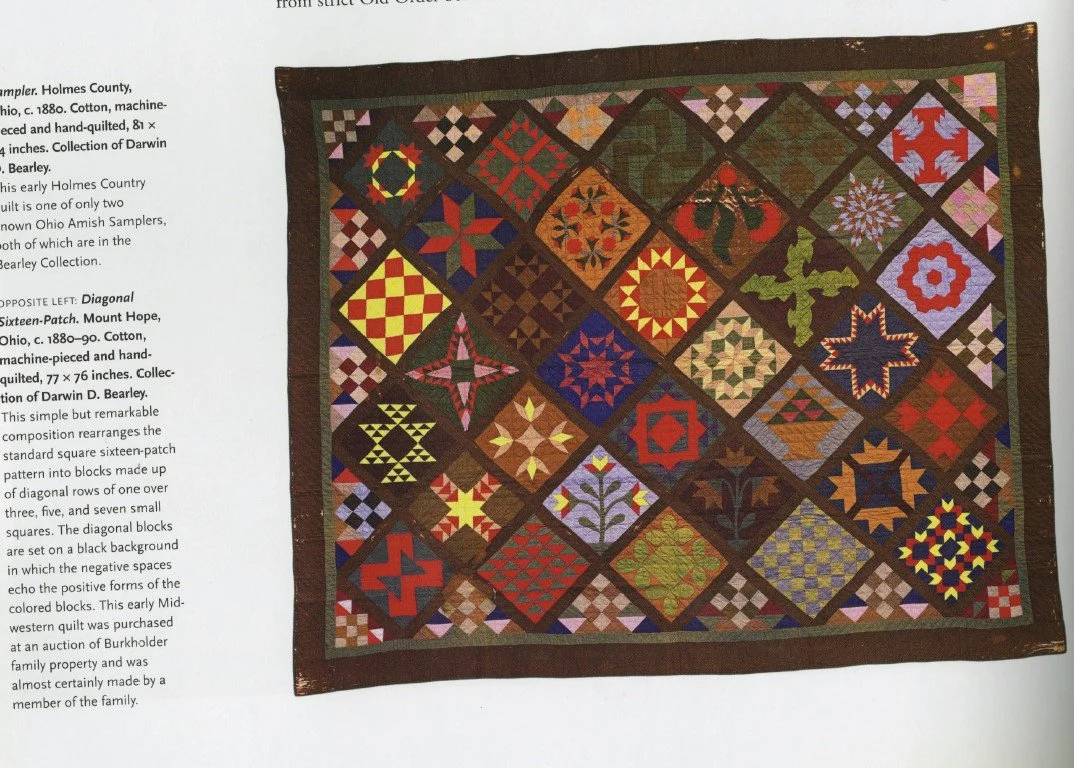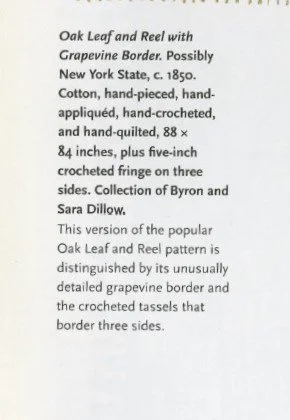Natural Dyes Quilt
Natural dyes have existed as long as civilization has existed. It is a uniquely human thing to beautify our surroundings. I made this quilt to pay homage to my heritage through natural dyes.
Local Quilt, 2025, Claire Kovchegov, 90”x90”
Research
“Russian Embroidery,” The Russian Fashion Blog, May 22, 2014, https://www.russianfashionblog.com/russian-embroidery/.
Chilean Textile Examples
Mordanting
Cochineal
“Russian Embroidery,” The Russian Fashion Blog, May 22, 2014, https://www.russianfashionblog.com/russian-embroidery/.
Robert Shaw, American Quilts: The Democratic Art, 1780-2007 (New York, NY: Sterling, 2009).
Willow Ann Sirch, Quilting the World Over (Radnor, Pa: Chilton Book Co, 1991).
Ohioan Textile Examples
Robert Shaw, American Quilts: The Democratic Art, 1780-2007 (New York, NY: Sterling, 2009).
Robert Shaw, American Quilts: The Democratic Art, 1780-2007 (New York, NY: Sterling, 2009).
Ideation
I was working off the theme of “local colors.” I have 4 places which I can call local to me. My dad is Russian, my mom is Chilean, I was raised in Ohio, and I now live in New York.
Black walnuts are abundant in Ohio in October and the shells contain lots of tanins to dye with, which result in the brown color.
Madder root was used historically throughout Russia, which result in the brighter pink color.
Cochineal is still being raised in Chile and created the fuchsia color.
Avocado is consumed at such a high rate in NYC that I would consider it a local dye and created the ashier pink color.
The fabric is deadstock white cotton from Theory.
The design itself is celebrating how different my heritages are, but acting still as one person.
I chose natural dyes because it infuses the roots of where the dyes came from with my ethnic roots. It also biodegrades along with the cotton I chose, so when my quilt has completed this stage in its life, it is prepared for the next without harming anyone or anything else. Lastly, I wanted to break myself out of my controlling habits and let nature take the wheel with exactly what color I was going to receive.
Russian Textile Examples
“Season 3, Episode 2 (Episode 48),” Sew What? (blog), October 21, 2021, https://sewwhatpodcast.com/season-3-episode-2/.
Willow Ann Sirch, Quilting the World Over (Radnor, Pa: Chilton Book Co, 1991).
Robert Shaw, American Quilts: The Democratic Art, 1780-2007 (New York, NY: Sterling, 2009).
Robert Shaw, American Quilts: The Democratic Art, 1780-2007 (New York, NY: Sterling, 2009).
My iteration was too similar to Wilder’s piece.
This was my original final piece, but I received feedback that the whole point of the dyes and the quilt was that I was mixed, but my dyes were still separate.
Robert Shaw, American Quilts: The Democratic Art, 1780-2007 (New York, NY: Sterling, 2009).
New York Textile Examples
Robert Shaw, American Quilts: The Democratic Art, 1780-2007 (New York, NY: Sterling, 2009).
Robert Shaw, American Quilts: The Democratic Art, 1780-2007 (New York, NY: Sterling, 2009).
All these textile examples felt too much like their own stand-alone work. I felt I would be disrespecting the textiles by randomly combining different elements, and I didn’t think it would look nice anyway.
So I kept searching…
Lucy Engels’s Fugue
Alison Wilder’s Vent Violet collection
This version was too complex (but I’m keeping it in mind for further projects).
Process
My final iteration.
Bath 1
735g cotton, scoured with dawn dish soap
10% oak galls - 73.5g
Soda ash 1.5% - 11g
Aluminum sulfate 10% - 73g
NYC tap water
Pot of water with oak galls and fabric at 140F for 1 hour and left overnight.
Next day, emptied pot and rinsed fabric. Added water back in and added alum and soda ash. Kept at 140F for 1 hour.
Rinsed and air dried.
Extraction
11.1g of cochineal
Grind cochineal with mortar and pestle into a powder
Add to a pot of 2 cups of NYC tap water at 210F for 15 minutes
Strain out liquid into a vessel and keep the bug powder
Put bugs back into the pot and again at 210F for 15 minutes with 2 cups of NYC tap water. Strain and repeat for a total of 3 times
Dyeing
Pre-soaked the 190.46g of fibers for about 30 minutes
Dip-dyed the fiber in the bath for about 20 minutes at 140F
Black Walnut
Extraction
72g of dried walnut hulls from dye garden
Put in NYC tap water, heated at 140F for 1hr
Turned off heat, left it to sit overnight.
Removed the hulls the next day and left the dye in a dark area for a few days before using
Dyeing
Pre-soaked 149.16g of fibers for about 30 minutes. Kept the fibers in the dye bath for about 1 hour at 140F
Bath 3
498g cotton, scoured with dawn dish soap
10% oak galls - 49.8g
Soda ash 1.5% - 7.47g
Aluminum sulfate 10% - 49.8g
NYC tap water
Pot of water with oak galls and fabric at 140F for 1 hour.
Emptied pot and rinsed fabric. Added water back in and added alum and soda ash. Kept at 140F for 1 hour.
Rinsed and air dried.
Bath 2
546g cotton, scoured with dawn dish soap
10% oak galls - 54.6g
Soda ash 1.5% - 8.19g
Aluminum sulfate 10% - 54.6g
NYC tap water
Pot of water with oak galls and fabric at 140F for 1 hour.
Emptied pot and rinsed fabric. Added water back in and added alum and soda ash. Kept at 140F for 1 hour.
Rinsed and air dried.
Bath 4
162g cotton, scoured with dawn dish soap
10% oak galls - 16.2g
Soda ash 1.5% - 2.43g
Aluminum sulfate 10% - 16.2g
NYC tap water
Pot of water with oak galls and fabric at 140F for 1 hour.
Emptied pot and rinsed fabric. Added water back in and added alum and soda ash. Kept at 140F for 1 hour.
Rinsed and air dried.
Madder
Extraction
Soaked 34g of madder root for 5.5 hours in NYC tap water
Transferred to a pot and kept at 140F for 1 hour, strained with a coffee filter and sieve.
Dyeing
Brought the bath back up to 140F and soaked each section (68.5g of fiber) for 10-20 minutes each.
Avocado
Extraction
2 whole avocado skins and 4 avocado pits from my grandparents
Clean the avocado bits very well
Bring NYC tap water to heat at 140F and add the avocado bits. Raised the temp to 175F for about 30 minutes. After 1 hour, smash the pits open
Test pH, add soda ash until pH reaches 11
Soaked overnight, strained and put away the next day.
Dyeing
Re-heated the dye to 140F
Pre-soaked fiber for 30-45 minutes
Kept in dye bath for 20 minutes
Left air drying


